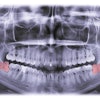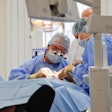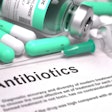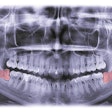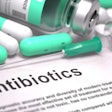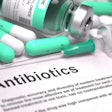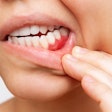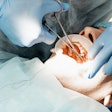Guidelines regarding antibiotic prophylaxis for the prevention of infective endocarditis in dental patients are misinterpreted, not carried out properly, and need clarification. The commentary was published on November 18 in the Journal of the American Dental Association.
It is critical that dentists know that patients with cardiac conditions, including a prosthetic heart valve, should take antibiotics 30 to 60 minutes prior to certain invasive procedures, and administering them after care doesn't offer equivalent protection against infective endocarditis (IE), the authors wrote.
"On the basis of our understanding, we emphasize the critical importance of preprocedural antibiotic administration and maintain that postprocedural dosing does not offer the same protection against IE," wrote the authors, led by Dr. Nalton Ferraro of the Harvard School of Dental Medicine in Boston.
In the spring of 2021, the American Heart Association (AHA) issued a statement on the prevention of infective endocarditis, a bacterial infection that causes heart inflammation, noting that antibiotic prophylaxis before dental procedures may prevent a very small number of endocarditis cases. Therefore, antibiotics only are recommended for patients at the highest risk of experiencing negative outcomes from infective endocarditis, including those with cardiac valve repair with devices like rings or clips, left ventricular assist devices or implantable heart, and congenital heart defects.
The guidelines recommend a single dose of antibiotics to high-risk patients administered 30 to 60 minutes before procedures that involve manipulation of the gingival tissue, periapical region of the teeth, or perforation of the oral mucosa. If antibiotics aren't given before the procedure, the guidelines state they may be administered up to two hours after the procedure, according to the commentary.
The misunderstanding
Despite the guidelines, many clinicians and dental students seem to treat the administration of prophylactic antibiotics within two hours after a procedure as effectively equivalent as giving the medication between 30 to 60 minutes before the procedure. This is being done despite no such equivalency being supported by research, the authors wrote.
Having antibiotics before invasive procedures allows the medication to reach adequate levels in the bloodstream at the time of the highest potential of bacterial exposure. Therefore, postprocedural administration of antibiotics should be considered "much less efficacious" and a last option instead of a standard practice, they wrote.
"The American Dental Association and AHA must emphasize that postprocedural administration of prophylactic antibiotics should only be done within 2 hours after the procedure as a last resort if the preprocedure dose was not received for any reason," Ferraro et al wrote.




